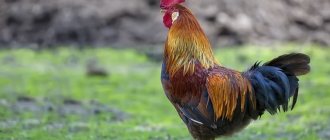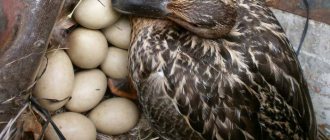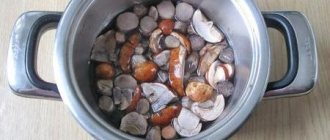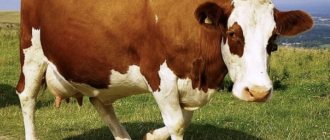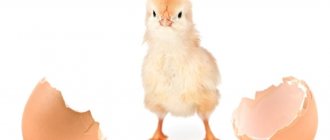Raising broiler chickens is a very popular activity today, because in a relatively short period of time (two months) the bird gains a lot of weight, from 2.5 kg to 3 kg. The cost of raising one broiler from birth to slaughter is relatively low compared to other types of animals and birds. In order to quickly raise birds to maximum weight, it is necessary to adhere to special rules both in their care and feeding.
Cooking at home
Many poultry farmers do not trust industrial feeds too much and prepare mixtures for feeding broilers themselves. In addition, it is much more profitable than purchasing a finished product. Preparing feed at home also requires purchasing grain and other ingredients, which should only be purchased from reliable sellers. With low-quality grain, harmful pesticides and other components that can lead to the death of young animals can enter the food of chickens.
Start: quantity according to the table for cooking
To feed chickens at the initial stage of growth, you can prepare a mixture consisting of the following components:
- crushed corn – 50%;
- crushed wheat grain – 16%;
- sunflower cake – 14%;
- barley – 8%;
- low-fat kefir – 12%.
Kefir contains vitamins and lactic acid bacteria, which are very useful for small chickens. Due to the presence of a liquid and perishable fraction, such food should be prepared in small portions and not left in the feeder for a long time. You can slightly reduce the amount of corn and add fishmeal instead. Some recipes may contain small amounts of yeast, but experts say it should not be given to the smallest chickens. The chickens are fed every two hours.
You can learn how to build a brooder with your own hands here.
This food is primary and contains a large amount of protein, which is essentially a building material for a young body. Starter feed can be used from the first days of life.
Chicken growth: how much feed to give
After broilers reach 14 days, the composition of the feed changes slightly. Many poultry farmers add the ingredient BVMK, which is a protein-vitamin-mineral concentrate, to the feed mixture at the chicken growth stage. Growth feed for broilers may have the following composition:
- crushed corn – 48%;
- sunflower cake – 15%;
- wheat grain – 8%;
- ground barley – 6%;
- fish or meat flour – 7%;
- herbal flour – 3%;
- yeast – 2%;
- fish oil – 1%;
- chalk – 1%;
- sodium chloride – 0.1%;
- BVMK ten percent - 10%.
The concentrate can be 5% or 10%, which should be taken into account when preparing the mixture.
Finish elite
Starting from 30 days, broilers should be transferred to finishing elite feeding. During this period, the chickens are already large enough and grains can be fed without crushing. In addition, fresh vegetables and herbs should be added to the feed, which is absent in industrial feed. The composition of the finishing feed may vary within small limits, but the basic composition will look like this:
- corn – 45%;
- sunflower cake – 15%;
- fresh vegetables and herbs – 12%;
- wheat – 10%;
- barley – 8%;
- feed yeast – 5%;
- fishmeal – 5%;
- chalk, crushed shells or limestone – 5%.
Many poultry farmers add sprouted grains to the finishing feed. This product contains many biologically active substances that stimulate good digestion and active weight gain. This mixture contains a reduced amount of protein components, since in older chickens it is no longer so important.
However, this feed contains more minerals and vitamins, which allows for proper care and a longer life expectancy for the bird. Read about how to build broiler cages with your own hands here.
How to prepare mash correctly?
They are made with skim milk or yogurt. It is imperative to feed the mash to broilers immediately after preparation, since dairy feed spoils quickly and can cause indigestion and other diseases. You should not give your bird stale food. Wet mash is made with the addition of grain crops, and subsequently, starting from day 20, broilers must be given boiled potatoes. The mash may also contain fresh fish, as well as various vitamins and minerals.
If you raise poultry in the summer, you can give them grass: alfalfa, dandelion, clover, nettle and other green food that you have on hand. Add the greens to the mash, after finely chopping them. The initial portion of greens in the feed is 5%, then you can increase it.
In winter, when the choice of greens, unfortunately, is not so great, you can add grass flour or sprouted barley grains to the mash. When broilers are more than six days old, you can give them finely grated pumpkin and red carrots.
As the long-term practice of specialists in this field shows, broilers are ready for slaughter within two to three months. It is no longer profitable to keep them, because the feed consumption is high, and the weight does not increase. And no matter how much you feed the bird, it will not gain more than its weight of 3 kg.
Broiler feed
Broiler
It is important for poultry farmers to know how much feed they need to raise a broiler at home. Feed consumption by age and estimated live weight gain
Feed consumption by age and estimated live weight gain
| Chick age | 1 day – 2 weeks | 2 weeks –1 month | 1–1.5 months |
| Feed consumption (g) | 15-80 | 80-120 | 120-180 |
| Average weight | 40 g-0.5 kg | 0.5-1.6 kg | 1.6-2.5 kg |
| Average growth (years) | 30 | 48 | 55 |
On a note. The proportion of water and feed in the birds’ diet is 1.7:1.
Liquid requirement:
- freshness;
- purity;
- no higher than 18...22 °C.
For the effectiveness of the diet, it is important to remember the age of the bird. To understand how much feed a broiler eats before slaughter, you will need a table
It shows the number of chickens per day. The table allows you to control the standards for the successful rearing of birds.
Feeding broiler chickens
Within 5 days, the chicks consume 15 g of feed. After 5 days, the dosage is increased to 20 g. Starting from day 11 to 20, 45 g of feed is consumed daily. Then every 2 weeks the amount of feed increases by 20 g. A one-month-old chick eats 120 g.
The nutrition table and visual information will make it easier to calculate your diet.
Amount of feed, depending on the age of the chicks
| Age, days | Feed, Mr. |
| 01.05.2018 | 15 |
| 06.10.2018 | 20 |
| 01.11.2020 | 80 |
| 21-30 | 120 |
| 31-45 | 180 |
| 46-60 | 220 |
After a week, the chickens are transferred to five feedings a day. At the age of 1 month and until the broilers are slaughtered, fattening twice a day is suitable.
Attention! Eating feed determines how long a broiler grows at home before slaughter. The intensity of fattening young animals is determined by the age of the chickens
They focus on slaughter feed for broilers at the final stage of rearing.
Broiler diet
Chickens need a balanced diet. To gain weight, mash is used, as well as dry food in granules.
The mash contains whey or milk, as well as mixed feed. Meat broth is good. 0.5 liters of water is given per 1000 g of dry chicken feed. The product sours quickly. An hour after feeding, remove any leftover food and wash the dishes.
The feed contains the following ingredients:
- oats and wheat;
- fishmeal and corn;
- table salt and barley;
- cake
The age of the bird affects the set of components.
Chicks have an acute reaction to a deficiency of vitamins in food. Broilers systematically need special vitamin supplements.
Vitamins A and E appear on the menu on the 5th day. This is followed by the addition of ergocalciferol. The following ratio is followed: for 10 ml of D2 0.5 l of vegetable oil. Storing the mixture in the refrigerator. Feed the chicks 2 times a week, adding 1 tsp. drug per 1000 g of feed.
Grass feeding
Attention! Broilers are not fed greens immediately after hatching. It is advisable to mow the grass before feeding
Oat and barley flour along with yogurt are mixed into the greens
It is advisable to mow the grass before feeding. Flour from oats and barley along with curdled milk is mixed into the greens.
Chopped grass is fed to the birds from the 5th day, 3 g are spent on the broiler daily. After a couple of days, the standard increases to 5 g, but no more.
Greens that benefit chickens:
- sorrel and radish foliage;
- plantain and onion feather;
- peas and chickweed;
- dandelions and lettuce;
- quinoa and garlic stalks.
Herbs containing many useful substances are required for the growth of broilers. Plants are selected carefully for fear of poisoning the chickens.
Greens for chickens
Toxic plants:
- burdock and potato flowers, foliage;
- white acacia and tomato branches;
- horse chestnut and elderberry;
- juniper, leaves and pear seeds.
On a note. Knowledge of herbs will allow private owners to avoid risks when feeding and not worry about reducing the growth parameters of meat chicken breeds.
Feed for broiler chickens: which ones to choose
Typically, owners of private farmsteads who raise broilers produce their own feed or purchase the feed that they can get. But if you have a choice, then it is better, of course, to understand the compositions and purchase feed for each period of growing broiler chickens for a balanced diet.
Recently, Best Mix feed has been very popular. Its composition is optimally balanced and contains corn flour, soybeans, wheat and its products, sunflower and its cake, salt, fish meal, soda, mineral and vitamin complexes, amino acids and much more.
The same manufacturer produces vitamin and antibacterial supplements that must be given to broiler chickens in the first days of life. The reviews are mostly positive and if you use products from this brand, you can leave your feedback in the comments.
Important! Broiler feed is selected based on factors such as the age of the bird and its breed. An adult must necessarily receive corn, wheat (crushed), peas, barley, small shells, chalk (we have already listed these components in percentage terms above).
The relationship between nutrition and weight gain
Advice
Crosses are specially created for producing marketable meat carcasses. And in order for broilers to grow quickly, they provide the livestock with complete feed, proteins, vitamins and microelements.
It is recommended to use a scheme for raising young animals, which includes four fattening periods.
First
The pre-launch period falls on the first week of broiler life. Feed is given 8 times a day, at the rate of 20 g of food for each chicken.
In addition to pre-start feed, chopped boiled eggs, oatmeal, and low-fat cottage cheese are fed. Weight gain per day is at least 15 g. At the end of the first stage, the weight of the chickens is about 115 g.
Second
The starting period starts from 6 to 20 days. Reduce the number of feedings to 5 per day. But they increase the portion from 50 to 80 g per chicken.
Weighing shows a weight gain of at least 30 g per day. By the end of the period, young animals weighing 650 g are obtained.
It is allowed to feed ad libitum, bringing the amount of corn to 45% of the total feed. The young animals are given grated carrots and pumpkin, greens, bone, fish and grass meal, yeast, meal, and animal fat.
Third
The fattening stage lasts up to 40 days. With proper feeding, the bird gains about 55 g per day. Therefore, chickens at the final stage weigh 2.1 kg.
Each bird is given 150 g of feed 4 times a day, feeding the young with boiled potatoes, fish, yeast, grain crops, chalk and premixes.
Fourth
At the final stage before slaughter, each broiler is given 170 g of feed twice a day. They provide food in abundance, switching the livestock to whole grains, green mass and succulent feed. Feeding allows you to get carcasses of 2.5 kg.
To gain weight, it is recommended to ensure the supply of microelements and minerals, and not to skimp on high-quality feed and vitamin supplements.
Detailed recommendations for preparing a diet are described in the article “Feeding standards for broilers.”
Feeding standards
We examined the composition of various types of feed. In addition to this indicator, you need to remember the quantity that the birds need, as well as the feeding regime of the flock. As the body grows, the needs of the body change, although there are two main stages in terms of feeding: pre-launch (chickens) and fattening.
Chickens
Newly hatched chicks need to be fed often, but in small portions. Eight-time feeding is ideal; each chick is given no more than 50 grams of feed at a time. The need for fats, proteins, carbohydrates and microelements is met by the following feed mixture:
- crushed corn, wheat and oats in equal quantities (in total 73% of the entire mixture);
- powdered milk;
- crushed soybeans or soy flour;
- remix for both chickens and remix for laying hens.
This composition is a pre-start feed and is given to young animals up to 8 days old. Try to distribute all meals evenly throughout the day, that is, approximately every 3 hours.
Fattening
Upon completion of the pre-launch stage, a longer stage begins - fattening the livestock. During this time, the feeding regime of the livestock changes several times:
- from 7 to 14 days of life - six meals a day;
- from 14 to 28 - four times a day;
- from the moment of introduction of the finishing feed until slaughter - twice a day.
During the first period of fattening, the rate of giving food at a time is 50-90 grams per individual. Every 5-6 days this amount should be increased by 1.5-2 times.
Complete feed for broilers
Below is a table that shows the daily amount of feed for one individual and the level of growth of the chicken, in kg. Thanks to this data, you can calculate how much one individual consumes.
Table 1.
| Broiler age | Live weight, kg | Amount of feed, g/day |
| 1 Week | 0,166 | 29 |
| 2 week | 0,427 | 63 |
| 3 week | 0,846 | 104 |
| 4 week | 1,350 | 138 |
| 5 week | 1,925 | 168 |
| week 6 | 2,527 | 193 |
| week 7 | 3,091 | 204 |
| 8 week | 3,599 | 207 |
The table provides approximate consumption data, but the bird’s growth rate will directly depend on the type of feed and feeding intensity.
There are two ways to feed broilers, depending on the growing conditions of the birds:
- At large poultry factories I use complete feed
- At home, birds are fed dry mixture and wet mash.
In this case, individuals are fed in three stages: pre-start, start and finish. Depending on the period, the diet is changed.
https://www.youtube.com/watch?v=subscribe_widget
The first stage, pre-launch, begins on the first day of the chicks’ life and lasts a week. During this period, they are given grain crops: corn, wheat, oats, barley. They should make up at least ¾ of the total feed in the daily diet. The remainder consists of: soybean meal (14%), dry skimmed milk (12%) and premixes, which contain all the necessary vitamins and minerals to maintain the broiler’s immunity; they can be given as much food as they want, but approximately stick to the norm.
He eats a lot of food at one time, but it’s not worth saving. With proper feeding, broilers can gain weight from 1.5 kg to 2 kg during this stage. Chickens must first be fed 8 times a day, then gradually reduce the amount of food they eat to 2 times a day. But be sure to ensure that the bird’s growth rates do not decrease sharply.
At the final stage (starting from week 28), the diet for poultry is as follows: 45% corn and 10% wheat, sunflower meal 19%, bone meal 2%, feed yeast - 5%, fish meal - 3%. As at the starting stage, chickens must be fed with premixes, chalk, table salt and animal feed fat.
Recommendations for feeding broiler chickens
Broilers are raised for meat. Based on this, we can assume that they need to be fed a lot and nutritiously. After all, the cost of keeping poultry mainly depends on the purchase of feed. But you must follow the correct diet. In addition to regular food, they also need to be given various kinds of vitamins, amino acids, protein and microelements.
At the same time, broilers need a lot of water, which should always be fresh and clean. Chickens can drink water as much as they want, because its amount should be more than one and a half times more than the amount of food.
Tips for gaining weight
Content adjustment:
- Equipment for an insulated poultry house. The herd is kept on a thick layer of bedding or in cages. It is highly undesirable to equip a walking yard where the bird feels uncomfortable.
- Remove damp bedding regularly to prevent mold from growing on the floor. High humidity causes indigestion.
- The air temperature during the first week of chickens’ life should not fall below +30°C. As the livestock matures, the indicators are reduced to +20°C.
- The lights in the room are never turned off. It is advisable to use dim light and paint the lamps red to avoid outbreaks of cannibalism.
- The poultry house is promptly cleared of excrement and internal surfaces and equipment are disinfected.
- The bird is sensitive to ammonia fumes, so ventilation or vents are installed to ventilate toxic substances.
- Place basins with an ash-sand mixture for bathing chickens. This is how they get rid of parasites on their own.
If the housing conditions are met, and the chickens look sick, it is advisable to introduce food additives into the diet. For example, Chiktonik, the use of which is described in the article “Instructions for using Chiktonik for chickens.”
Feeding chickens aged 1 to 14 days
The first days of life are the most critical, so it is necessary to choose the right diet and feeding pattern. As mentioned earlier, at this time the chickens are fed at least 8 times a day. By the second week of life, the number of meals is reduced to six. The approximate daily intake is 10-15 grams, by day 14 - about 80 grams, increase portion sizes to avoid malnutrition.
Small chicks should receive plenty of boiled eggs, dairy products such as whey, low-fat kefir, cottage cheese, and wet millet mash, to which various dairy products are added.
In the absence of pronounced problems with the functionality of the stomach, such as diarrhea or indigestion, the chicks are given dry feed, which is created specifically for the starting period. The main ingredient of this food is corn, which stimulates the active development of the skeleton and muscles, increasing the performance of the stomach and intestines.
The cost of the purchased option is relatively high, so it is much more reasonable to create the mixture yourself, and then extrude it using:
- 50 percent of the total weight of ground corn.
- 15 percent ground wheat
- 15 percent meal or cake.
- 12 percent dairy products.
- as well as barley (the remaining share).
In the first days of life, the share of grain crops is 55-60 percent of the total diet. It is important to feed the grain ground and without film.
Already from the second week, crushed shells, shells, chalk, as well as fish oil, which contains many nutrients, appear in the diet. In addition, babies are fed grass flour, crushed dandelion, dry nettle, pea greens and alfalfa, which helps to compensate for the deficiency of fiber in the body.
Fresh greens are considered the main natural source of vitamins.
Feeding ration
The simplest feeding scheme for broilers, which is suitable for novice poultry farmers, involves feeding them with ready-made mixed feed: up to 30 days - starting feed, from a month until slaughter - finishing feed. The protein level in the starting stage of feeding should be 23%, in the finishing stage it should be less - 21%.
A slightly more complex scheme is feeding with 3 types of compound feed: up to 3 weeks of age - starter compound feed, the next 2 weeks - growth feed, from 35 onwards - finishing feed. With 3-period feeding at the start, the level of crude protein in the chicks’ diet should be 23%, during the growth period - 21% and in the finishing period, respectively, 20%.
But it is best to feed broilers at home for rapid growth and weight gain according to a four-stage scheme that most fully meets the needs of meat cross chickens. In this case, the feed for broiler chickens will be mixed feed of different types.
From 0 to 5 days
This stage is the most important in fattening broilers for meat in the household. Chicks that have recently hatched from the egg must have their digestive system adjusted, so they must be given special mixtures designed for chicks of this age.
To feed broiler chickens, pre-start feed (PK-5) is used, adding a little skimmed milk powder or milk, also dry in an amount of 3–5% (thanks to these additives, the broilers’ need for all essential amino acids is satisfied). In this feed, all nutrients are in high concentration, are highly soluble in water and are easily processed in the digestive tract of chickens. It contains cereals with a high content of simple carbohydrates and sucrose, and soybean meal. The particle size of this mixture is very small - it looks like finely crushed chaff or flour.
To feed day-old broiler chicks, you can prepare pre-start feed by yourself by mixing the necessary ingredients in the required proportions:
Until 4 weeks of age, grain feed (barley, millet, oats), as well as sunflower cake and meal, must be sieved to separate from the films, as they can clog the muscular part of the stomach of chickens and cause their death.
From 5 to 18 days
After day 5, the pre-start feed is replaced with the starter feed. Its composition is almost the same as the previous one, but the ratio of components is different. It also contains fats and feed yeast, grass (required), fish and meat and bone meal. Starter feed is already produced in the form of granules.
For enhanced growth and good development, chickens need proper mineral nutrition. To balance compound feeds according to the mineral substances they contain, feed chalk, bone meal, defluorinated phosphate and ordinary salt should be added to them. The balance of calcium and phosphorus in the chicken menu should be 1.4:0.7.
If you feed broilers with your own prepared compound feed, then be sure to add premixes that contain amino acids, vitamins and mineral elements: they are responsible for the harmonious development of the young chicken body and accelerate its growth. If these substances do not enter the body in sufficient quantities, then the development of bone tissue does not keep pace with the development of muscle mass and, as a result, broilers “fall on their feet.”
Gravel (flint or granite) can be given to broiler chickens from a week of age at the rate of 4–5 g per individual once a week.
From 19 to 37 days
By the 3rd week of life, the digestive tract of chickens completes its formation, their appetite increases and the need for food increases. It is during this period that broilers show maximum weight gain. Three-week-old chickens are fed food in which the proportion of carbohydrates is increased and the proportion of proteins is reduced. For this purpose, growth (finishing) compound feed is used.
You can feed 1-month-old broiler chickens not only with granulated feed, but also with crushed grain mashes of various types of cereals and legumes. They must add oil cakes or meal, herbal flour or, even better, fresh chopped herbs, grated raw or boiled root vegetables. To replenish the diet with vitamins, meat and bone or fish meal, feed yeast, premixes are added to the mixture and mixed with the main ingredients.
From 38 to 45 days
With the beginning of this period, broilers begin to pay less for feed, and their growth slows down. For this reason, the period for feeding broilers at home is determined to be no longer than 45 days (at this time they are slaughtered). After a month, broilers are given finishing compound feed at the last stage of fattening. It contains all the same components as other types, but the ratio of the components in it looks different: at this stage, carbohydrates predominate in it. There are also proteins, but there are fewer of them.
What and how to feed broilers
Broilers are meat-producing chickens, so for feeding them you should select special feeds and follow feeding programs developed by specialists. Only in this case can we hope that the costs of business development will pay off in full and bring profit.
Compound feed for broilers
We must not forget that chickens love to drink - they should always have clean and fresh water in large quantities. The water temperature should be 18-22 degrees Celsius.
The best option for feeding broilers is compound feed; you can add various additives yourself. Which ones and how many depends on the age of the chickens. There are mixtures on sale that are designed and manufactured specifically for chickens, for egg-laying hens, and for broilers. Having purchased ready-made combined feeds, all you have to do is provide the livestock with the daily nutritional requirement and wait for the costs to be recouped.
How many kilograms of feed does a chicken need for rapid and full development? This table shows how much feed 1 chicken eats per day, and what is the daily feed consumption. Please note that daily feed consumption increases every 5-10 days.
On average, broiler chickens from scratch to one week of age need to be fed 8 times a day, otherwise their stomachs simply will not have time to digest large volumes of feed and they will get sick. Starting from the second week, young animals are fed 5 times a day, from the third - 4 times a day, from 4 weeks until slaughter - 2 times a day.
Fattening of broilers proceeds according to the following scheme: prestart – start – fattening – finish. Weight gain directly depends on how many grams of feed 1 chicken eats per day. We look at the table, which determines the average daily gain and feed consumption by age per 1 chicken:
With proper feeding, a ten-day-old chicken should weigh 0.2-0.25 kg. Moreover, hens weigh 20-30 grams less than cockerels, although they eat on a par with cockerels.
The structure of the feed depends on the age of broiler chickens, and on the ability of the stomach and intestines to digest this or that type of feed. So, from the first to ten days, chickens can be given microgranules or sifted grains. From 11 to 24 days - granules measuring 2-3.5 mm, as well as a scattering of coarse powder. From the 25th day until slaughter - granules measuring 3.5 mm, and a scattering of coarse grinding.
Feeding broilers during the first two weeks of life is especially important; an incorrectly formulated diet can destroy the entire young. Feed should be easily digestible and easily soluble. These requirements are well met by millet, oatmeal, bran, crushed barley, oats, boiled eggs, and cottage cheese.
Fresh herbs can be added starting from the 5th day, at the rate of 5 grams per 1 chicken per day. Week-old broilers should be given pureed pumpkin and carrots.
A good increase in muscle mass can be achieved if boiled potatoes, sunflower cake and dairy products are added to the chicken diet from the 20th day. And yet, at this age the chicken’s stomach is weak, so it needs to be given more fresh herbs and sprouted wheat grains.
If fresh grass is not available, it can be replaced with grass meal. In summer, broilers are given fresh vegetables - carrots, pumpkin, and in winter, dry grass, eggshells, and vitamins from the pharmacy.
From the same age, 20% of millet in the diet of young animals can be replaced with boiled potatoes. To quickly increase muscle mass, add fresh fish and bread yeast to the mash. Yeast is diluted with warm water or warm milk, at the rate of 200-300 grams of yeast per 10 kg of dry food.
From the age of one month, chickens can be fed whole grains. Final feeding remains unchanged, but more grass and succulent feed are introduced into the diet.
Compound feed for broilers can be prepared independently, at home, it contains the nutrients, vitamins and minerals necessary for the growth of young animals.
How many different types of grain should there be in feed? In percentage terms, the composition of the feed should look like this:
- 25-30% wheat;
- 15% barley;
- 10-15% peas;
- 20-25% corn;
- 10% soy;
- 5% sunflower cake or flour;
- 5% fishmeal, chalk, vitamins, yeast.
Finish feeds are prepared from:
- 45% corn;
- 15% wheat;
- 10% barley;
- 15% crown;
- 5% bone or fish meal;
- 5% feed yeast;
- 5% chalk, greens, vitamins.
You should not give cucumbers, zucchini, or beets to broilers - these foods weaken the stomach and cause diarrhea in the bird.
For rapid weight gain, young animals can be fed not only dry, but also wet feed. Dry feeds are granular mixtures, and wet feeds are mashes prepared with whey, milk or broth. Mixers are made at the rate of 0.5 liquid per 1 kg of dry food. For variety, the composition of the mash can and should be changed more often.
Do not make mash for future use - the remains of the mash will turn sour and cannot be used for feed. In this case, they should be refrigerated, or given next time only after heat treatment.
Broiler fattening
A distinctive feature of this type of poultry is the absence of difficulties in arranging a place of residence. Broilers do not need to create any difficult living conditions, but they still need to adhere to a special feeding regime. If you intend to fatten chickens of this breed, carefully study the question of how much feed a broiler needs before slaughter.
However, every newborn chick requires proper care and comfortable living conditions. In the first days of life, chickens are kept in equipped cages made of metal mesh with special heating systems in the form of infrared lamps or ordinary incandescent lamps. In order for birds to grow and develop fully, during the first week of life they need to be provided with a temperature within the range of 26-33 degrees Celsius. In the following days, these indicators drop to 19-20 degrees.
If growing occurs on the floor, in wooden or cardboard cages, then be sure to cover the floor of such a structure with a special bedding ten-centimeter layer. The following materials can be used as a base:
- Sawdust.
- Straw.
- Shavings.
When soiled, the litter is changed. For seating young animals, it is customary to adhere to a scheme of 15-18 heads per 1 square meter of area.
It is also important to take care of the correct lighting conditions. Light should be supplied to the house 24 hours a day, but it should not be too bright and harm the chicks' vulnerable eyes.
Many farmers paint their lamps blue or green.
To protect young livestock from gastrointestinal infections, drinking systems and feeders are regularly washed with hot water and detergents, and also rinsed thoroughly. In addition, young animals are given a slightly pink solution of potassium permanganate and a number of antibiotics that increase the functionality of the immune system.
Sick individuals are quarantined and require intensive treatment based on medications and high-quality feed.
Broiler slaughter
Poultry is raised for meat and egg products, and sooner or later the chickens have to be slaughtered. In factories, this process is automated and occurs in a few minutes. At home it is more difficult and takes more time. To make this lesson easier, we will give brief instructions on the entire process.
Preparation
Before killing a broiler, you first need to prepare it for this:
- A day before slaughter, it is necessary to select a suitable individual;
- Carefully catch it by the paws so as not to damage anything;
- Place in a separate cage or room;
- Before slaughter, she is not given any food, but only water to completely cleanse her intestines. To speed up cleansing, you can give a 2% solution of Glauber's salt instead of water. Metabolism speeds up if you don't turn off the lights.
You can kill a broiler using several methods. One of them is the external method:
- Stun the bird by hitting it on the head.
- Place in a cone or simply tighten the legs with a loop and hang from a nail or branch.
- Using scissors or a sharp knife, cut the throat behind the earlobes (you can simply cut off the head on a stump).
- Let the blood drain.
Read also: Lakenfelder chickens: characteristics of the breed and its features, photos of rare birds, reviews about them
You can use the internal method, which is used mainly in poultry farms:
- Stun the broiler.
- Hang by the legs or place in a cone.
- To open the beak, you need to press the point between the lobes and the eyes.
- Insert scissors or a knife with a thin blade into the beak and cut all important vessels.
- Stick the point into the brain.
Video: broiler slaughter
When the blood drains from the hanging carcass, do the following:
- Place the broiler in water heated to 65.70 degrees. Hold it like this for about a minute.
- Place it on the table and pick the feathers in a circular motion.
- Hold the bird over the burner to remove any remaining hairs.
- Gut the carcass.
The gutting process consists of several stages:
- In the goiter area, carefully cut the skin.
- Separate the crop from the skin by pulling it up towards the head.
- After this, tie the crop in a knot.
- Open the carcass in the cloaca area by making an incision.
- Pull up the intestines, separating them from the inner surface.
- Remove the insides along with the crop.
The carcass is ready. You can use it for further preparation.
We briefly talked about calculating the required amount of feed for raising broilers, and also provided instructions for slaughtering poultry. We hope that our article will be useful to you and will help you understand a little about the intricacies of poultry farming. Good business and healthy birds!
Living conditions
To breed broilers you do not need any special knowledge. If you decide to start raising broilers at home, you must keep the birds in certain conditions. Caring for broilers is different from keeping regular chicken breeds.
Place. From the first day of life, chickens need to arrange a place. Broilers can be kept on litter or in cages. Litter (sawdust or other dry, loose mass) should be no more than 10 cm. It is allowed to contain no more than 18 heads per square meter.
It is important to maintain the temperature at 26–33 °C in the first 5–7 days of life, and then gradually reduce the temperature to 19–18 °C. The room must be illuminated 24 hours a day. The light is dim, in the first seven days the lamp power should be 1.8 W per square meter, then until the 7th week of growth - 1.2 W and at the finish line you can use a lamp of 0.6 W
Too bright light can cause pecking. The lamp lamp can be painted green or red
The light is dim, in the first seven days the lamp power should be 1.8 W per square meter, then until the 7th week of growth - 1.2 W and at the finish line you can install a lamp of 0.6 W. Too bright light can cause pecking. The lamp lamp can be painted green or red
The room must be illuminated 24 hours a day. The light is dim, in the first seven days the lamp power should be 1.8 W per square meter, then until the 7th week of growth - 1.2 W and at the finish line you can install a lamp of 0.6 W. Too bright light can cause pecking. The lamp lamp can be painted green or red.
Broilers need cleanliness and constant care
Maintaining cleanliness. You need to constantly monitor the cleanliness of the room where broilers grow. Clean regularly and change the litter. To prevent gastrointestinal infections in poultry, drinkers and feeders should be washed with hot water.
Features of broiler care
You can even grow them at home, because it’s quite simple. But it is worth remembering that the conditions for them differ from the conditions for keeping ordinary chickens.
From the very first day of their life, broiler chickens must be kept either in cages or on litter. The bedding can be sawdust or another mass that resembles them in structure. Its layer should not be too large, not exceeding 10 centimeters. And if you decide to grow a large number of heads, then you shouldn’t save space. It is not recommended to place more than 18 individuals on one square meter.
When raising poultry, it is also very important to maintain temperature conditions. From the very first days, chicks really need warmth and light, so for the first week it is necessary to maintain the temperature at 30 degrees. Gradually it decreases to 18-19 degrees. Lighting must be provided around the clock, but the light must be dim. To do this, the lamp can be painted, for example, green.
When broilers grow up, they can be kept outside. But the conditions for this must be appropriate - cleanliness, plenty of light and oxygen. In the room where you will keep broilers, you need to constantly change the litter so that it is not damp and dirty. Feeders and drinking bowls must be washed regularly with hot water to avoid intestinal infections and various diseases. Birds of this breed have weak immunity, so if you do not want to be left without profit, you must carefully follow all the rules for care.
It is necessary to inspect the bird every day. If you notice that an individual has weakened, become lethargic, or even fallen on its feet, you should immediately put it away from the others in a separate cage and begin nursing it. If this is not done on time, then the entire livestock may die from infection even before slaughter.
Popular broiler crosses
What is this
The term “broiler” does not mean a specific breed, but young meat crosses, specially fed to a marketable carcass.
More often, broilers are called hybrid lines from crossing Langshans, Plymouth Rocks, Cochins and other breeds.
Let's look at brief characteristics of common types.
Broiler-M
It is considered a universal cross. Hens fatten up to 2.8 kg, roosters about 3 kg.
After 5 months, chickens begin laying eggs, producing 160 eggs per year.
Broiler-61
Refers to a four-line cross. Plymouthrocks were used for crossing with Cochins. By 6 weeks after hatching, each chick has grown to 1.8 kg.
The advantages include high quality meat, rapid weight gain, and survival rate compared to other broilers.
But building up mass becomes the scourge of cross-country training - problems with bones begin. Therefore, it is advised to adjust the diet of young animals.
ROSS-308
With proper fattening, broiler chickens gain 2.5 kg up to 6 weeks of age.
During the day, the young animals become 55 g heavier, which is considered an indicator of a properly formulated diet.
ROSS-708
They are characterized by rapid weight gain. Already after the first month of life, they grow about 2.5 kg.
The only drawback is that buyers do not really like the whitish skin, which is explained by the rapid growth of chickens.
Gibro-6
Young broilers gain 30 g of weight every day, which translates to 1.5 kg of broilers at 1.5 months.
The bird is covered with white plumage and shows sufficient egg production - 160 eggs. A commercial quality carcass with yellow skin is obtained. But when growing, they monitor the diet because of the fragility of the bones.
COBB-500
It is recommended to feed intensively in the first month of life. The advantages are considered to be insignificant expenses on feed and sufficient survival of young animals.
Chickens in a flock develop equally. An increase of up to 2.5 kg is obtained within 40 days.
Change
A highly productive cross, giving an increase of up to 40 g per day. About 140 eggs are obtained from laying hens during the egg-laying period.
The young are considered resilient. Although it is recommended to keep the livestock after hatching in a warm poultry house with additional heating.
conclusions
The carcass with the yellowish skin of the COBB-500 cross is considered the most attractive for sale. It is obtained without adding corn grain or food additives to the diet of young animals.
Read the detailed description of KOBB-500 and other popular broilers in the article “About broiler chickens: what they are and which ones are better.”
Raising broilers for meat is available to every farmer. Of course, if you know how long a chicken grows to reach its optimal weight.
During the first 20 days, chickens produce maximum growth. Over the next 3 weeks, the diet, temperature and hygiene of the poultry house are monitored to further increase the weight of the chickens before slaughter.
After broilers reach 3 months, their maintenance becomes impractical due to growth inhibition and increasing feed costs.
Fattening period
Many broiler breeders are interested in the question of how many days it takes to raise a bird from young to slaughter. It must be said right away that everything depends on the breeder, but, as a rule, slaughter is carried out in the period from 2 to 3 months of the birds’ life. It is at this moment that the birds should have gained the required mass. By the way, it is better to slaughter when the weight is sufficient; this will not only save costs, but also preserve the quality of the meat.
Often the weight of a 3-week-old bird will be up to 0.7 kg. When the birds are a month old, they should weigh about 1.5 kg. At two months the broiler weight should be 2.5 kg.
Common Mistakes
Errors in the maintenance of broilers lead to the fact that individuals die or stop growing. The main thing is to prevent rotting of the litter. Mold forms on it if drinkers and feeders are placed on a layer of sawdust.
It is necessary to constantly clean the premises and cages of droppings. In this case, it is worth disinfecting the walls and floors and drying them to prevent the development of diseases.
When the nutrition of broilers is not balanced, it contains few vitamins and microelements, then the birds begin to peck at each other’s heads. Weak specimens suffer the most from attacks.
Young animals must be fed at the same time. Don't forget about clean warm water. Broilers often die due to dehydration.
Thanks to mandatory vaccination, all birds can be saved if symptoms of the disease appear in some individuals.
A profitable business will be successful when you properly engage in broiler farming.
Nutritional Features
Broilers have some differences from ordinary chickens, not only in their maintenance methods, but also in their feeding. Any change in diet can cause unwanted diseases in birds and stop weight gain, which is the most important thing when breeding broilers.
There is an opinion that broilers can be bred and raised exclusively on compound feed, without additives such as vitamins or herbal products. As a rule, this is possible if drugs with hormonal changes in birds are used, as well as with the use of antibiotics. But this feeding is wrong. Firstly, this may negatively affect consumers of such meat, and secondly, broilers also need grains, minerals and other substances. Naturally, their consumption will be slightly higher than when feeding ordinary chicken.
Broilers are considered meat birds, and therefore the key to success lies in nutrition. For feeding, you should select only balanced feeds that include all the necessary substances. Only by selecting the right food can you get income in the form of meat and profit from the money spent on growing. Breeders also need to know how much vitamins and minerals to add to their diet depending on their age.
Today, every breeder can simply purchase the necessary feed, which is made taking into account the needs of broilers and for rapid weight gain. The main thing when buying is to know how many days or months the birds are, and also to buy food specifically for the broiler. Thus, with the help of compound feed, it will be possible not to make food with your own hands, but simply use the standards indicated on the packaging.
You should know that such birds need a certain amount of feed per day, and the norm is calculated taking into account the age of the bird. Over the course of every 5-10 days, breeders should increase feed consumption by approximately 10-15 grams. Also, do not forget about drinking plenty of fluids. Broilers should always have fresh and clean water.
As for the composition of the feed, it usually includes grain crops, as well as bone meal, salt or chalk, various fats and cake. All ingredients and their quantity directly depend on the age of the bird.
Content Features
Breeding broilers at home can develop in two directions. In one case, they use their own livestock and brood hens, which regularly hatch chicks. Young animals are raised to a certain weight category and then slaughtered. Another option involves purchasing a batch of chickens, fattening them and slaughtering them. Typically, small chickens are purchased in the spring or summer and are fattened for 60-70 days. With an intensive rearing method, a new batch of young animals is purchased every two and a half months and the process is repeated.
Regardless of the chosen direction, maintaining and fattening boilers has its own characteristics. Broiler chickens can be kept in a cage or on thick (deep) litter. If broilers are raised for their own needs, they can be kept in cardboard boxes, which should be placed in a dry and warm room. The box must have a source of light and heat. Raising broilers for sale requires having a chicken coop.
A chicken coop can be built from any building material. Most often, poultry houses are built from wood, brick or aerated concrete blocks. The size of the room is selected depending on the size of the livestock. Usually the accepted value is 5-7 chickens per 1 m2. Raising broilers in cages allows increasing the housing density. A small poultry house for broilers can be made from double wooden panels, between which mineral wool mats are laid as insulation. The roof can be made pitched, but also with insulation and protection from rain.
Read about broiler cages here.
The foundation can be made strip. It should be raised above the ground by 30-40 cm. This will protect the broiler population from rodents. It is best to make the floor concrete, as the wood will rot. If bedding is used, the layer thickness should not be less than 10-12 cm. Sawdust is well suited for this purpose. When soiled, such litter can be easily replaced. A chicken coop for broilers must meet the following conditions:
- sufficient area;
- correct temperature conditions;
- good lighting;
- ventilation without drafts;
- high sanitary and hygienic indicators.
Broiler chickens do not require walks, so there may be no open enclosure.
Read about chicken feeders here.
How to reduce feed consumption when feeding broilers
In the household you will always find food waste, root vegetables, green grass and cereals, chaff from them, and you can buy the necessary vitamins and supplements in pharmacies. What to feed broilers for rapid growth at home?
Five recipes for raising healthy livestock:
- Use fermented cereal mixtures. To do this, add 200-300 g of pressed baker's yeast to the cereal mixture, dilute everything in 15 liters of water, heat for 6 hours to improve fermentation. Then add greens and boiled root vegetables up to 30 kg of total weight. Use the food fresh, avoiding souring. The proportions can be reduced, depending on the number of heads for fattening. You can give a yeast mixture of cereals without greens, but add crushed potatoes.
- Wet mash is prepared from crushed grain, small cereals, crushed and soaked bread crumbs and crusts, porridge, greens and boiled potatoes. The more varied the composition, the better it is eaten. Is it possible to feed broilers with boiled potatoes alone? Occasionally you can pamper the chicks by making the menu varied.
- For feeding at home it is necessary to use dairy products. The milk is poured fresh, not sour. It is also good to add skim milk, cottage cheese, buttermilk, whey, but without mixing with milk. Grains can be given at the same time.
- Fresh greens can be fed not only in cut form. To prevent the bird from being thrown out of the feeder or trampled, you can hang brooms of fresh herbs: dandelion, sow thistle, clover, alfalfa. Is it possible to give spurge to broilers? This is a treat for them. When kept in winter, the green food will be seedlings of cereal crops - wheat, barley.
- Maintaining cleanliness. You should not give sour food to birds. Feeders need to be scalded frequently. Food should not be available for consumption by wild birds or rodents. They can be carriers of diseases.
Answers to common questions
Slaughter can be carried out on the 50th day, less often - on the 70th day. By this time, the net weight of the chicken will be 3.7 kg. The largest ones reach 5 kg
In this case, it is important to wait for the bird to plumage, otherwise plucking will be more difficult and longer. As a result, there will be no feathers that are difficult to pull out, and the broiler will fledge faster this way
The carcass will be cleaner, without the smell of droppings. If chickens are outside more often, there will be more muscle and meat.
Broiler weighing
Ross-308, Ross-708, Koob-500, Hubbard cross are meat breeds. These birds are distinguished by rapid weight gain, calm disposition and heavy weight. Some individuals reach 5-6 kg. The only drawback is that broilers lay few eggs.
A specially equipped chicken coop is built for breeding chicks.
What is important for development and weight gain:
- temperature not lower than 30 degrees,
- 24-hour lighting in the first weeks of chicks’ lives,
- diet depending on age.
Under ideal conditions, chickens reach a weight of 1.6 kg in the first month, by the end of the second month the weight reaches 2.7 kg. By the time of slaughter, the broiler weighs from 3.7 to 5 kg.
Useful tips for feeding broilers from experienced poultry farmers
- Yeast is beneficial for the body of birds. They must be added to the feed, after being diluted in water at a temperature of 30 degrees. For ten kilograms of feed, 200 grams of yeast will be enough.
- Often chickens get their paws into the feeder and trample the food. It is important to monitor this point, as the bird eats fresh food better. The ideal option would be if you fill the container to one third.
- If the chicken is not eating well, is lethargic or weak, it needs to be treated. An effective method is to feed milk and egg yolk twice a day using a pipette.
Business profitability
Before you start calculating profits, you need to take into account exactly how much you will have to spend at the starting stage and in the future when keeping broilers. The main items that will require the greatest investment are summarized in the table.
Table 3. Costs of raising broiler chickens
| Expense line | Cost (thousand rubles) |
| Construction of a permanent poultry house | 70 – 150 |
| Documenting | 15 |
| Purchase of equipment | 30 |
| Stern | 10 |
| Chicks | Eggs – 0.03; chicken – 0.1 |
To avoid losses, slaughter broilers in a timely manner
Thus, the business has an average profitability with large production volumes. They are low if the population is less than 100 individuals. Since there are few problems with chicken, and the bird itself is quite calm, for many, broiler breeding becomes the main source of income.
Having your own farm store will reduce costs, since large companies require a minimum price and a large number of documents. To obtain permission to sell, you will have to obtain a veterinarian's opinion, but it will be possible to sell not at a wholesale price, but at a retail price.
How much feed do broilers eat?
The most suitable food for fattening this bird is compound feed. Ready-made mixtures are sold in specialized stores. Proper weight gain directly depends on how much the chicken and adult eat per day. Therefore, their fattening is carried out according to a special scheme, which includes the following stages: pre-start period, starting period, fattening period and finish.
Pre-launch period
A proper diet in the first days is especially important, since the greatest mortality is observed precisely at this time. In the first 5 days, the chicken needs about 15-20 g of feed daily. At this time, the young animals are fed 8 times a day so that their stomachs, which are not yet strong, can digest the food. The average daily gain should be 15 grams. At this stage, easily digestible food is needed. In addition to mixed feed, millet, oatmeal, cottage cheese and boiled eggs are also suitable. At the end of this stage, the weight of the chicken should be from 50 to 115 g.
Starting period
During this time, which starts from 6 days and lasts 20 days, the chicken should receive from 30 g (at the beginning) to 80 g (at the end) every day. This means that the amount of food gradually increases. The number of feedings can be reduced up to 5 times. Weight gain per day should be about 30 g, and at the end of the period the weight of the chicken should be from 120 to 650 g. At this time, greens, grated pumpkin and carrots are introduced into the diet. In winter, in the absence of green grass, it is replaced with hay or grass meal. It is also important to remember that chickens need sufficient water.
This is the period of greatest weight gain, therefore the amount of feed increases significantly. Until day 40, birds need to receive at least 100-150 g of food per day. Feeding during this period has the greatest effect on weight gain, which should reach from 0.7 to 2.1 kg. Good weight gain is achieved by introducing boiled potatoes, kefir, and sunflower cake into the diet.
You can add fresh fish and yeast to the mash (for 10 kg of feed, add 200 g of yeast, which is diluted with warm water or milk). The number of meals can be reduced to 3-4 times. If the bird receives proper feeding, then the daily weight gain should be at least 50-55 g.
At the finish line, broilers are fed 2 times a day, but the amount of feed should be at least 160-170 g. At the age of over 1 month, birds can be fed whole grain rather than crushed grain; the diet should contain more succulent feed and grass. At this time, the amount of food is maximum, and at the end of it (at the age of 2 months), the bird is slaughtered. At this time, she should reach a weight of 2.1-2.5 kg. Further feeding will not bring the desired effect and keeping chickens becomes impractical.
Useful video about feeding broilers
Like the author!17
- Even more interesting:
- Properly caring for goslings
- Proper care and raising of mulard ducks
- How to properly and what to feed mulard ducklings
Discussion: 2 comments
- Irina:
01/30/2019 at 20:16I’m just starting to learn how to raise chickens and of course I’m interested in how to feed them properly. I will take your advice into account and put it into practice.
Answer
- Seryoga:
01/30/2019 at 20:19
Thanks for the tips on how to properly feed chickens. I hope that now my chickens will gain weight quickly.
Answer


